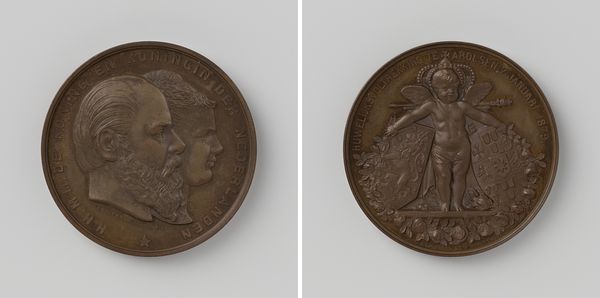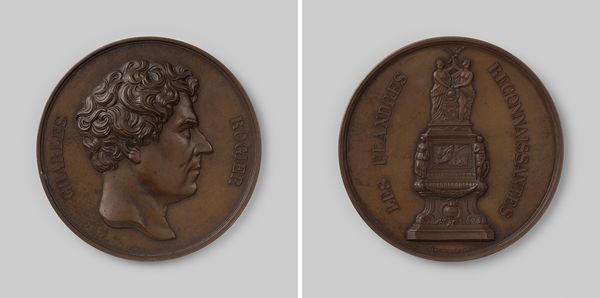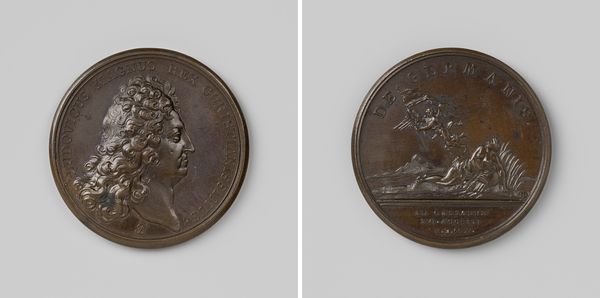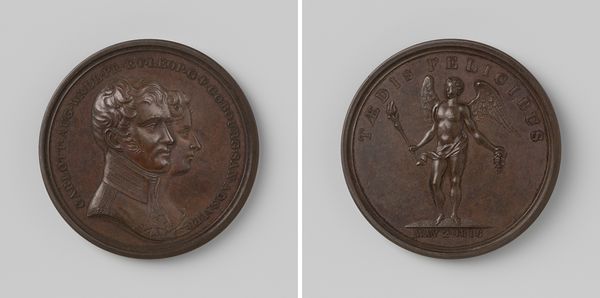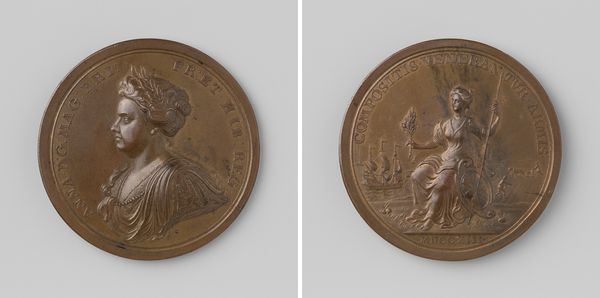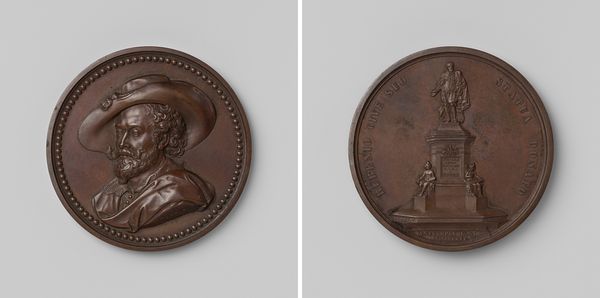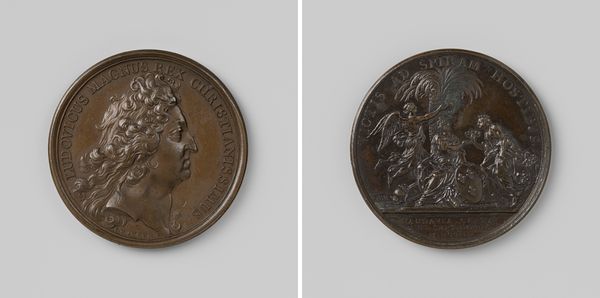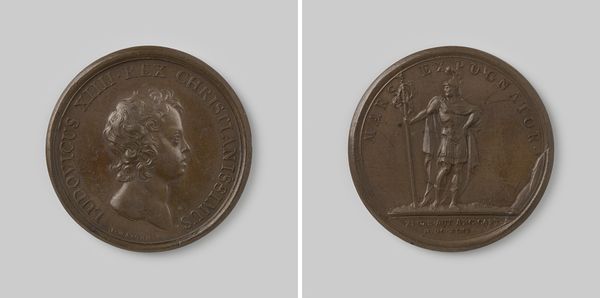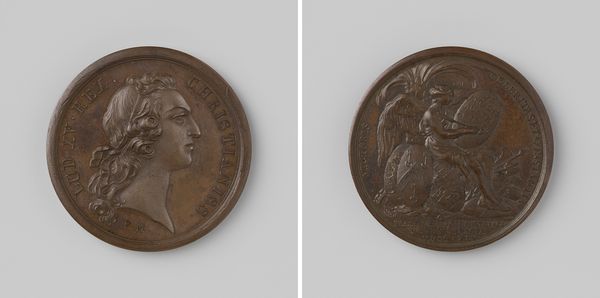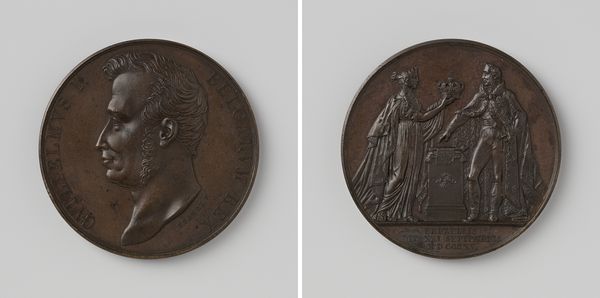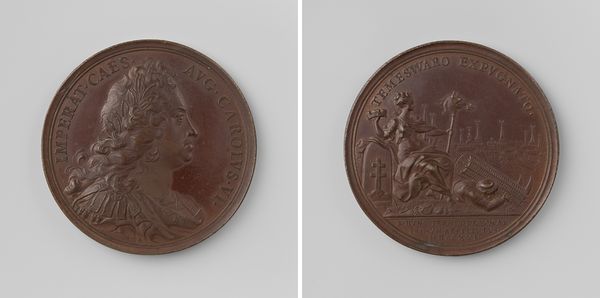
Charles Rogier, minister van Binnenlandse Zaken, bevorderaar van de algemene hygiene 1852
0:00
0:00
metal, bronze, sculpture
#
portrait
#
medal
#
neoclassicism
#
metal
#
sculpture
#
bronze
#
sculpture
#
ceramic
#
history-painting
#
statue
Dimensions: diameter 6.8 cm, weight 131.38 gr
Copyright: Rijks Museum: Open Domain
Editor: This is a bronze medal from 1852, portraying Charles Rogier by Leopold Wiener. The classical imagery is interesting, but what can we really *see* in its materiality and its context? Curator: Well, focusing on materiality, it's more than just "bronze". Consider how this object, a mass-produced medal, becomes a tool for constructing political memory. Wiener’s choice of bronze links it to the tradition of commemorative coins but elevates it through skillful modeling. Editor: I see, it's not just bronze, but what bronze *means* in the mid-19th century, like its role as a marker of importance, of wealth and power, but how does that fit in with Rogier himself, this man in charge of 'hygiene'? Curator: Precisely! Now think about hygiene: public sanitation wasn't about individual choices, but about controlling labour and bodies through governance. This medal transforms this control into a heroic narrative through material production itself. How does it influence perception of governance and state care? Editor: I hadn't thought about the 'heroic' angle—it really shapes that. What's striking to me is the use of bronze— a solid material associated with grand sculpture to convey, and almost justify, control over hygiene and bodies! Curator: Exactly. Consider who had access to these medals, and their distribution. Who could *see* it, touch it? How might the production process reinforce Rogier's, and the State's, agenda? Editor: So the bronze itself plays an active role... it's not just passive representation. Seeing it this way, it prompts interesting questions about state power in this period. I have learned how focusing on material leads to deeper historical insights. Curator: Indeed. Focusing on these production methods challenges our understanding of 'high' and 'low' art and gives tangible form to the abstract workings of social power.
Comments
No comments
Be the first to comment and join the conversation on the ultimate creative platform.

